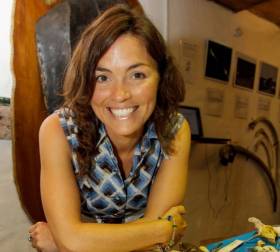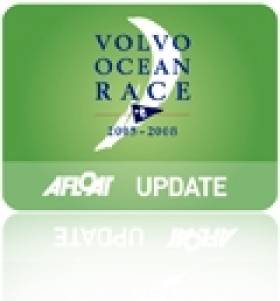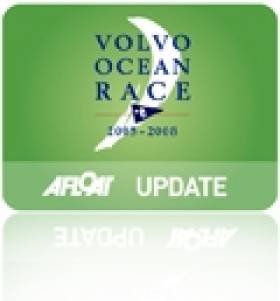Displaying items by tag: Brian Carlin
#VOR - With the clock ticking to the start of the 2017–18 Volvo Ocean Race as the race village opens in Alicante later today (Wednesday 11 October), it’s time to take a closer look at the significant Irish presence in the world’s most challenging yacht race, as recently noted by our own WM Nixon.
The biggest name beyond sailing circles is surely Annalise Murphy, the hero of Rio 2016 who is swapping her Laser Radial for an entirely different challenge with the crew of Turn the Tide on Plastic, skippered by women’s offshore sailing pioneer Dee Caffari.
The Dubliner and National Yacht Club stalwart caused some concern over the summer when a knee injury sustained in the Moth Worlds forced her to pull out of the World Championships in her primary class.
But that break from competition might have been just what Annalise needed to get herself back into fighting fitness — not to mention prepared for a round-the-globe voyage that’s a world apart from her Tokyo 2020 ambitions.
The other big name among the VOR 65 crews is Damian Foxall, who returns for his sixth Volvo Ocean Race — this time with Vestas 11th Hour Racing, the former Team Vestas Wind (whose senior project manager happens to be Madrid-based Irishman Thomas John McMaw).
What’s more, the Kerry offshore legend heads a strong contingent from The Kingdom in this latest VOR, with Brian Carlin leading the team of on-board reporters and marine biologist Lucy Hunt in charge of the race’s sustainability education programme.
Other Irish names of note behind the scenes include Bill O’Hara, a former Northern Irish Olympian and race officer in charge of the VOR’s 2012 climax in Galway who is part of the race committee for the 2017–18 race, and Johnny Donnelly, MD of VOR event contractor Arcana.
Two others previously unmentioned are Philip Johnston, a veteran cross-channel racer from Northern Ireland with a strong record in the Fastnet Race who brings his expertise on shore logistics to Turn the Tide on Plastic, and Cork sailor James O’Mahony, another Fastnet vet at the mainsheet and mast positions and well versed in what support his team will need as part of the shore crew for Team Vestas 11th Hour.
Afloat.ie will be keeping up with all of their exploits when the 13th edition of the Volvo Ocean Race gets under way on Sunday 22 October.
County Kerry's Big Presence in October's Volvo Round the World Race
Kerry will have a dominant presence in this year’s Volvo Round the World Race. Three of the Kingdom’s notable maritime figures are involved and, with Olympian Annalise Murphy also sailing, there will be strong Irish interest, writes Tom MacSweeney.
Biologist Lucy Hunt who runs Sea Synergy Marine Awareness Centre at Waterville has been appointed Sustainability Education Manager by Volvo Ocean Race, to develop an international schools programme on ocean literacy and ocean plastic pollution.
Damian Foxall from Kerry will sail with the former Team Vestas Wind now Vestas 11th Hour Racing. Brian Carlin of Tralee Bay Sailing Club. who was onboard reporter when Team Vestas hit rocks in the last race, has been appointed to lead the team of onboard reporters who will be embedded on the racing yachts
Annalise Murphy is with the Dee Caffari ‘Turn the Tide on Plastic’ entry, which should interact nicely with the work of Lucy Hunt.
While she is working with the Volvo Race, Sea Synergy will continue its operations in Kerry, where she has appointed a manager to run the centre and an Iveragh Learning Landscapes Weekend is planned for October 6-8. This is the second year o fthe event.
“A range of talks and workshops will be held in Waterville, Caherdaniel and Ballinskelligs by national and international facilitators including 4 marine themed workshops – learning in one of Irelands best classrooms – the seashore,” Lucy Hunt says.
#VOR - Irish sailing photographer and filmmaker Brian Carlin is returning to the Volvo Ocean Race — this time as leader for the fleet’s team of onboard reporters announced at the weekend.
Carlin made his debut in the VOR as the embedded multimedia reporter with Team Vestas Wind, the role offer coming as a surprise to the frequent contributor to Afloat.ie.
It was equally unexpected that he would be on hand to document the team’s disastrous grounding on a shoal in the Indian Ocean.
The Kerryman was nominated for the 2015 Mirabaud Yacht Racing Image of the Year Award for his shot of Vestas Wind’s damaged hull, ultimately coming second in the public vote.
Now Carlin heads a team that comprises some of the finest adventure photographers in the world, including National Geographic contributor Jen Edney; BBC journalist Tom Martienssen; and James Blake, son of VOR winner Sir Peter Blake.
Sam Greenfield joins Carlin as one of two reporters returning from the previous VOR, with the remaining debutants being Konrad Frost from CNN Mainsail, Jeremie Lecaudey from the snowboarding world, experienced sailing photographer Martin Keruzoré, Clipper Race cameraman Richard Edwards, and Spain’s Ugo Fonollá, the team’s youngest member.
Kerry is also represented in the next VOR by Damian Foxall, who will be on deck with Carlin’s old team — now renamed Vestas 11th Hour — as Leg Zero begins today (Wednesday 2 August) with a race around the Isle of Wight as part of Cowes Week.
The pre-race leg to establish the status of teams’ readiness for October’s start will continue from this weekend with the Rolex Fastnet Race, followed by a string of mini-races from Plymouth to St Malo to Lisbon.
Second Place For Carlin In Yacht Racing Image Awards
#VOR - Brian Carlin's shot of Team Vestas Wind's heartbreaking grounding in the Indian Ocean a year ago has been voted by the public into second place in the Mirabaud Yacht Racing Image of the Year Award.
Carlin – who served as Team Vestas Wind's onboard reporter during the 2014-15 Volvo Ocean Race, including the team's triumphant return to the race for its final stages after months of repairs – came just behind Rick Tomlinson's aerial photo of Team Brunel cutting through the choppy seas around Cape Horn.
But the experienced marine photographer and filmmaker, whose shots have graced Afloat.ie many a time over the years, also also received the special judges' award for this year's Most Iconic Image.
We're sure few will have any quibble with that!
Brian Carlin In The Running For Yacht Racing Image of the Year Award
#VOR - Ireland's own on-board reporter in the 2014-15 Volvo Ocean Race is among the race nominations for the Mirabaud Yacht Racing Image of the Year Award.
The Kerry marine photographer's shot of the damaged hull of Team Vestas Wind's yacht as it lay grounded in the middle of the Indian Ocean a year ago is one of 10 from the round-the-world yachting challenge selected for the shortlist of the prestigious award.
The official Volvo Ocean Race website has more selections available for public vote until Monday 30 November.
#vor – As the Volvo Ocean Race organisers release the investigation report into the Team Vestas Wind shipwreck in the Indian Ocean, Irish sailor Brian Carlin who was the yacht's Onboard Reporter describes dramatically on the current edition of THIS ISLAND NATION just what happened and how he survived.
"It wasn't what I signed up for in the round-the-world race. We only managed to get 15,000 miles before that night, but it has been character-building. I have learned a lot from it," he says in the interview as he describes how he was hurled forward into a bulkhead :
"I was thrown several metres, banged my head off the forward bulkhead and was stunned. I thought at first that we had hit either a floating container or a whale, but it was a chain of reefs in the Indian Ocean. I got up on deck and saw that we were in serious trouble. It was night time, dark, but there was white water crashing everywhere around the boat and we were lodged on a rock. We stayed six or seven hours on the boat. The Skipper wanted to keep us together which was the right decision, but it was tough going, we were thrown back and forth and the yacht took a heavy battering and it was all in the darkness, the only lights being the personal ones we had. It was a frightening experience to survive and the darkness made it even more so. About half-three in the morning that became too dangerous. There was about six feet to what looked like a safe piece of rock. We deployed the liferafts where we could get some protection for them on the side away from the rocks, but we had to get onto that piece of rock first to be safe. One crew member went across there first, with a rope tied around him and then the rest of us got onto it.
We clung onto that rock until daylight came up and then it was amazing to see that we were in a lagoon area which itself looked beautiful and was in the middle of the ocean."
Were you frightened at any stage that you might not survive, that you could die, I asked him?
"I was. There were two very bad moments. Initially I was a bit shocked. When we were waiting on the boat for daylight, I was afraid that it might overturn on us and we would be trapped. When we were getting off the boat onto the rock I really didn't want to leave it because you were going into the water to try to swim towards rocks which were being battered by waves and it looked like you could be battered too. But that piece of rock was the only place to be safe. The boat was no place to survive. I didn't want to do it, but I had to."
That night in the darkness they did not see sharks, but the following morning when daylight came up, they saw five or six within a hundred metres of the boat.
• Tune into Ireland's niche radio programme above and hear Brian's first-hand account of his experience and the advice he gives to all sailors to take careful notice of the safety recommendations from the RNLI
Also on the programme, the RNLI explains why the organisation is excited about the arrival of the first Shannon Class lifeboat to Lough Swilly and, continuing the explanation of nautical terms for landlubbers, the programme explains why sailors use 'port' and 'starboard' instead of 'left' and 'right'.
Volvo Race Latest in Epic Leg Two, Next 24 Hours Will Tell All
#vor – The final pages of the Leg 2 epic to Abu Dhabi will be played out in the next 24 hours. The leading trio of Team Brunel, Dongfeng and Abu Dhabi Ocean Racing have been close sparring partners since crossing the Equator on day 16 but one crew no longer involved is Team Vestas whose shipwrecked Volvo 65 is still reefbound. Irish camera man and onboard reporter Brian Carlin is still reliving the drama of the crash and reveals in this video above that he was in his underpants when disaster struck!
Volvo Ocean Race Team Vestas Crash Video
#vestas – County Kerry's Brian Carlin, the Team Vestas Wind onboard reporter, recounts the moments Vestas hit the bricks last week in the Volvo Ocean Race. Charging through the Indian Ocean at high speed and in total darkness, nothingness ahead, nothingness around. Speed is good, sailing is supreme. And then ...BANG....
Team Vestas Wind's boat grounded on the Cargados Carajos Shoals, Mauritius, in the Indian Ocean. Fortunately, no one was injured. In the images, the crew head back to the boat to retrieve everything they can; including ropes, diesel, Inmarsat dome and sails.
The nine-man Team Vestas Wind crew were stranded after crashing on a remote coral reef, before being picked up by a coastguard boat and taken to Mauritius.
Shore crew chief Neil Cox, said: "We've had nine guys sitting on a sand pit in the middle of the Indian Ocean. "The coastguard was asking me to warn the guys that the reef is riddled full of sharks and barracuda."
Scroll down for photos of the aftermath taken by Brian Carlin:
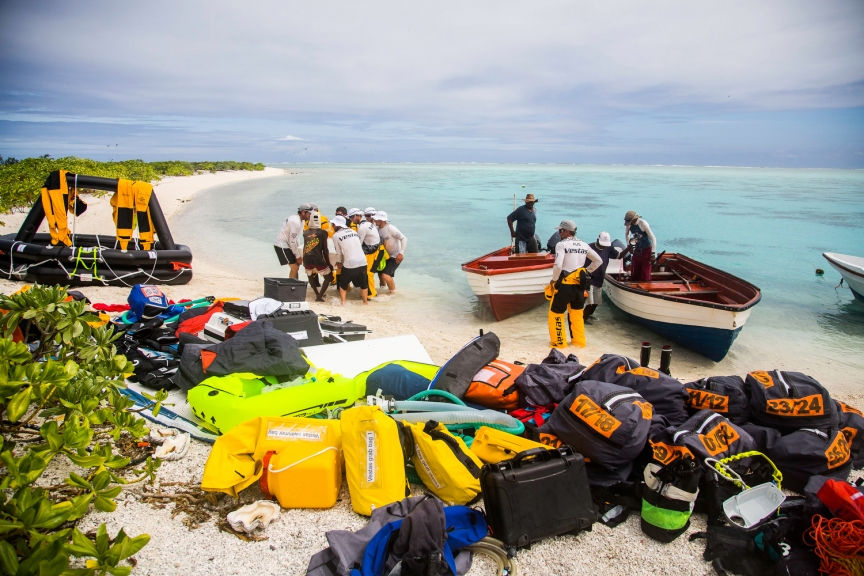



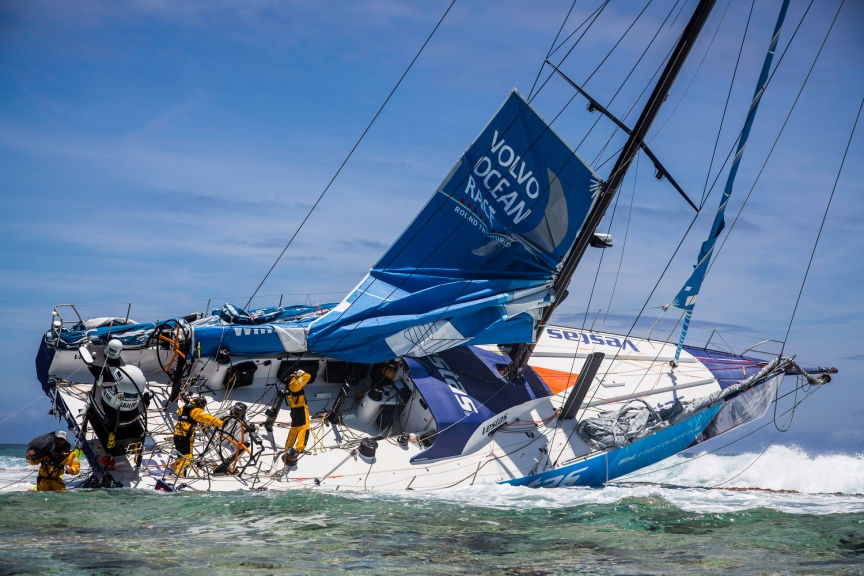

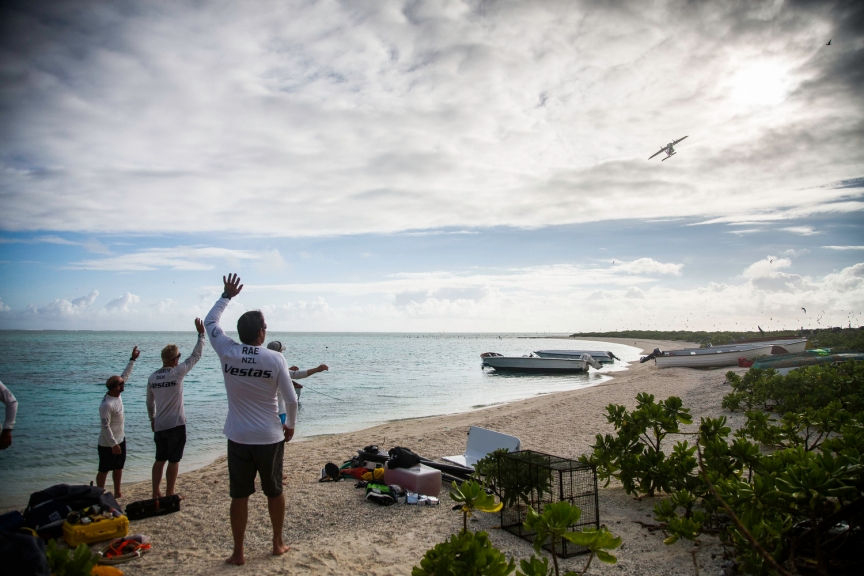
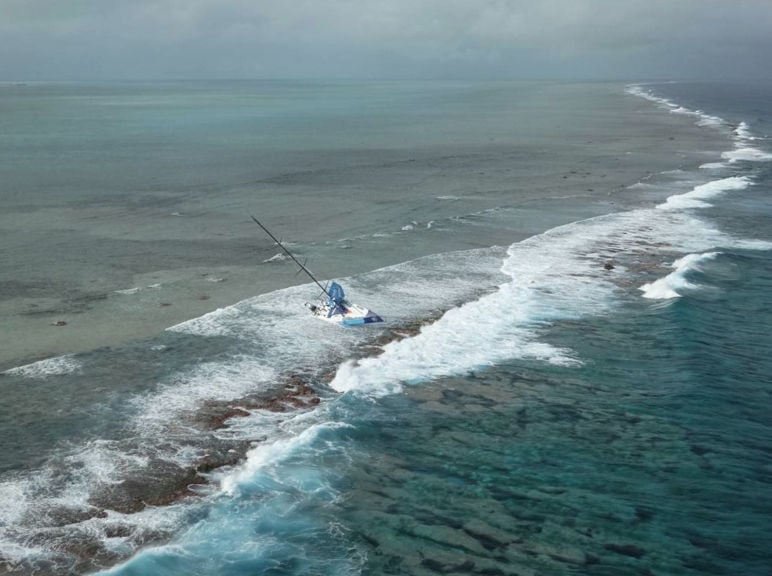
Team Vestas Abandoned, All Crew Rescued in VOR Drama
#vor – Team Vestas Wind crew were rescued in the small hours of Sunday morning after the Danish team's Volvo Ocean Race boat was grounded on a reef in the Indian Ocean, forcing them to abandon it.
All nine members of the team – inlcuding County Kerry's Brian Carlin – were uninjured in the drama, which unfolded from 1510 UTC on Saturday when their Volvo Ocean 65 hit the reef in Cargados Carajos Shoals, Mauritius.
For several hours, the crew stayed onboard their stricken vessel whose stern was being beaten badly by the waves as it was stuck fast in the reef with the bow facing the ocean.
The rudders were broken in the collision and the stern began taking on water although the stern compartment was locked tight.
Finally, around midnight, the team led by skipper Chris Nicholson (AUS) abandoned the boat and then waded, knee-deep through the sea to a dry spot on the reef from where they could be rescued by a coastguard RIB at daybreak at around 0230 UTC.
They were transported to the tiny islet of Íle du Sud, part of Cargados Carajos Shoals, which is also known as St. Brandon and situated some 430 kilometres to the north-east of Mauritius.
Kept informed
Race organisers and Team Vestas Wind will now attempt to take them from there to the mainland. Race Control in Alicante, Spain kept the Maritime Rescue Co-Operation Centre (MRCC) informed throughout the incident.
Team Vestas Wind's rival race crew, Team Alvimedica (Charlie Enright/USA), diverted to assist in a rescue mission if necessary but were eventually cleared to continue racing north after it was apparent that the Vestas crew were no longer in danger.
Navigator Will Oxley (AUS) sent this report from Team Alvimedica: "All is well on board, though it is fair to say we are all shattered and quite emotional about what happened.
"We are really pleased we were able to be of assistance and that the crew of Team Vestas Wind are all well and we look forward to a beer with them as soon as possible."
The Danish team's concern now will be a salvage mission for their boat but it was not immediately clear how much damage the incident had caused.
Knut Frostad, Volvo Ocean Race CEO, said it was also not yet known why Nicholson's crew had hit the reef, but this would be examined in due course.
"I'm extremely relieved that every one of the nine crew members now are safe and that nobody is injured," he said. "That has always been our first priority since we first learned about the grounding.
'Deeply saddened'
"At the same time, I'm deeply saddened that this happened to Team Vestas Wind and Chris Nicholson and his team. It's devastating for the team, for the race and for everyone involved. I really feel for Chris and the team right now and we will continue to support them all the way going forward."
Team Vestas Wind was the last of the seven crews to announce their participation in the race with just six weeks to go before the event began in Alicante on October 4.
However, Nicholson, who was second on Camper and Puma in the last two editions, assembled an experienced crew backed by talented young sailors from Denmark.
They were fifth when the boat was grounded and were fourth in the opening leg from Spain to Cape Town.
"The safety and wellbeing of the crew has been our only concern during these difficult hours," said Morten Albaek, CEO of Vestas Wind Ocean Racing.
"We are extremely grateful to the team at Volvo Ocean Race and to Alvimedica for their support and outstanding professionalism during the rescue operations. The extent of the damage to the boat will be evaluated and dealt with from here on."
Meanwhile, Leg 1 winners Abu Dhabi Ocean Racing (Ian Walker/GBR) took the second stage lead from Spanish rivals MAPFRE (Iker Martínez/ESP) by 0340 UTC on Sunday with Team Brunel in third. But this was not a day when lead changes seemed important at all.
Grounded Team Vestas Crew To Be Rescued by Alvimedica
#volvooceanrace – In a dramatic developement in the Volvo Ocean Race tonight, Team Alvimedica looks set to rescue crew from Team Vestas after its grouding in shoals in the Indian Ocean with Irish team member Brian Carlin onboard. No one is reprted injured but the boat appears to have incurrred substantial damage to its hull and rudders.
At 20.30 tongiht Team Alvimedica has now arrived at the site, is in radio contact with Team Vestas Wind and standing by to assist Team Vestas Wind, waiting for daylight.
Race Control is in contact with Team Vestas Wind every hour. The situation is currently stable on board and the crew plans to remain on board until daylight.
There is also contact established with a coastguard station on Isle de Sud, approximately 1.5 km from the boat, which has a RIB available.
The plan is for this vessel to assist in abandoning the boat as soon as possible after daylight.
Both rudders have been reported broken by the Team Vestas Wind crew. The team has also reported water ingress in the stern compartment.
The Volvo Ocean 65 has watertight bulkheads in the bow and the stern. The remaining part of the boat is intact including the rig.
We will update as soon as we have further information.
ORIGINAL STATEMENT
At 1510 UTC, Saturday, November 29, Team Vestas Wind informed Race Control that their boat was grounded on the Cargados Carajos Shoals, Mauritius, in the Indian Ocean. Fortunately, no one has been injured.
We are in contact with the boat to establish the extent of the damage and ensure the crew is given the support needed to enable it to deal with the situation.
The Maritime Rescue Coordination Centre (MRCC) in Reunion Island is aware of the problem.
The crew has informed us that it is currently grounded on a reef but nobody is injured. Volvo Ocean Race and Team Vestas Wind's top priority is to make sure the crew is safe.
The crew has informed Race organisers that it now plans to abandon the boat as soon as possible after daybreak.
Team Alvimedica and two other vessels are in contact with Team Vestas Wind to assist.
We will give you more information as it becomes available.



























